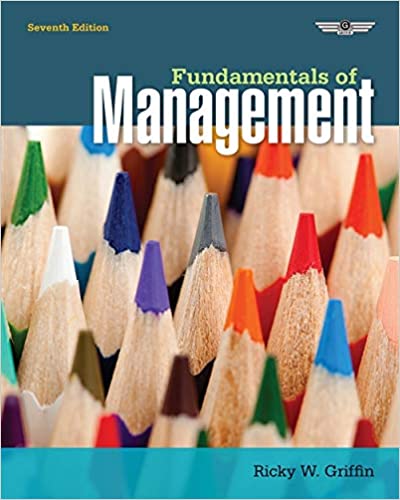
Fundamentals of Management 7th Edition by Ricky Griffin
Edition 7ISBN: 978-1133627494
Fundamentals of Management 7th Edition by Ricky Griffin
Edition 7ISBN: 978-1133627494 Exercise 10
Team Size and Performance
Purpose: Choosing the number of members in a team is an important decision that will affect team processes and outcomes. A team with too few members will have low performance because they are not receiving all of the benefits of effective teamwork. A team that is too large won't be able to develop strong cohesion and, again, performance will suffer. The best team size in a particular situation depends on the members themselves, the tasks they will perform, and the nature of the interaction between them.
Instructions:
Step 1: In a small class, the class will be divided into groups of four by the instructor. In a larger class, four students may be asked to volunteer to demonstrate in front of the whole group.
Step 2: Each group will receive a regular deck of 52 playing cards from the instructor. One group member is chosen to be the "sorter." The cards should be shuffled thoroughly and placed in a stack on the desk in front of the sorter. Another group member is the timer.
Step 3: At a signal from the instructor, the sorter or sorters pick up the cards. The timer notes the starting time. They must place the cards into four stacks by suit, arranging each stack from lowest to highest card. Aces are considered to be high. The task is done when the cards are in the four stacks. The timer records the elapsed time.
Step 4: After thoroughly shuffling the cards, repeat
Step 3. This time, however, the sorter will have a helper. The help may take any form-advice, encouragement, moving the cards, or anything else. After a brief discussion of the actions, the helper will take to aid the sorter, begin timing and start the task. At the end, the timer notes the elapsed time.
Step 5: After thoroughly shuffling the cards, repeat Step 3. This time, however, the sorter will have three helpers. The help may take any form-advice, encouragement, moving the cards, or anything else. After a brief discussion of the actions the helpers will take to aid the sorter, begin timing and start the task. At the end, the timer notes the elapsed time.
Follow-Up Questions:
In what ways is this exercise similar to the situation in a business organization? In what ways is it dissimilar? What lessons might managers learn from this exercise?
Purpose: Choosing the number of members in a team is an important decision that will affect team processes and outcomes. A team with too few members will have low performance because they are not receiving all of the benefits of effective teamwork. A team that is too large won't be able to develop strong cohesion and, again, performance will suffer. The best team size in a particular situation depends on the members themselves, the tasks they will perform, and the nature of the interaction between them.
Instructions:
Step 1: In a small class, the class will be divided into groups of four by the instructor. In a larger class, four students may be asked to volunteer to demonstrate in front of the whole group.
Step 2: Each group will receive a regular deck of 52 playing cards from the instructor. One group member is chosen to be the "sorter." The cards should be shuffled thoroughly and placed in a stack on the desk in front of the sorter. Another group member is the timer.
Step 3: At a signal from the instructor, the sorter or sorters pick up the cards. The timer notes the starting time. They must place the cards into four stacks by suit, arranging each stack from lowest to highest card. Aces are considered to be high. The task is done when the cards are in the four stacks. The timer records the elapsed time.
Step 4: After thoroughly shuffling the cards, repeat
Step 3. This time, however, the sorter will have a helper. The help may take any form-advice, encouragement, moving the cards, or anything else. After a brief discussion of the actions, the helper will take to aid the sorter, begin timing and start the task. At the end, the timer notes the elapsed time.
Step 5: After thoroughly shuffling the cards, repeat Step 3. This time, however, the sorter will have three helpers. The help may take any form-advice, encouragement, moving the cards, or anything else. After a brief discussion of the actions the helpers will take to aid the sorter, begin timing and start the task. At the end, the timer notes the elapsed time.
Follow-Up Questions:
In what ways is this exercise similar to the situation in a business organization? In what ways is it dissimilar? What lessons might managers learn from this exercise?
Explanation
This exercise is similar to the situatio...
Fundamentals of Management 7th Edition by Ricky Griffin
Why don’t you like this exercise?
Other Minimum 8 character and maximum 255 character
Character 255


